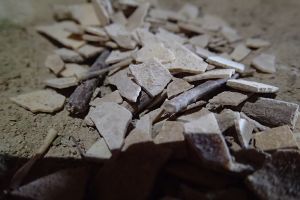Refining statistical sightings models for inferring event timings in palaeoecological records
Modelling prehistoric extinction and introduction events using Bayesian analysis of radiocarbon dates

Rigorous interpretations of radiocarbon-dated remains, such as bones or rat gnawed-seeds, are key to determining the timing of prehistoric extinction, introduction, and human settlement events. However, the oldest (for introductions/settlement) or youngest (for extinctions) dated specimens will unlikely reflect the true age of the event being dated. A window of invisibility will exist between the true age of the event and the nearest dated specimen relating to it.
Sightings models are a statistical means by which the actual age of an event can be predicted using associated radiocarbon-dated specimens. So far we have refined existing sightings methods for application to relatively recent events, including the initial human settlement of New Zealand and subsequent extinction of moa.
Perry GL, Wheeler A, Wood JR, Wilmshurst JM (2014). A high-precision chronology for the rapid extinction of New Zealand moa (Aves, Dinornithiformes). Quaternary Science Reviews 105: 126–135.


 Janet Wilmshurst
Janet Wilmshurst